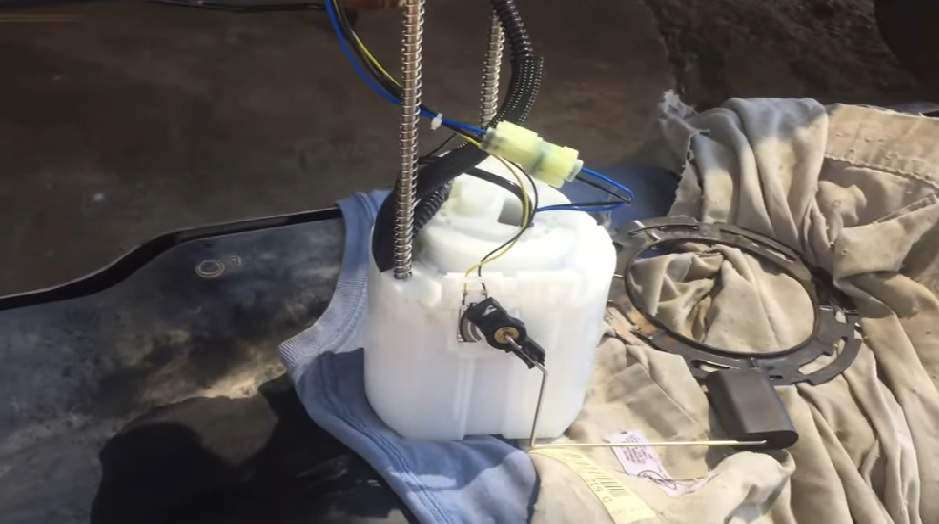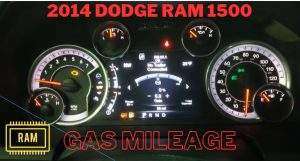Have you ever found yourself in a situation where your Ford F150’s gas gauge stops working? This can be a frustrating experience, but it’s important to understand the possible causes and how to fix them.
In this article, we’ll discuss the common reasons behind a malfunctioning gas gauge, how to diagnose the problem, and how to solve it. To begin our inquiry on the matter, let us delve right into it.
Table of Contents
Common Causes of a Malfunctioning Gas Gauge
There are several possible reasons why your Ford F150’s gas gauge may not be working correctly.
In order to gain a better understanding of the situation, it would be beneficial to examine some of the typical reasons behind the issue at hand.
Faulty Fuel Sending Unit
The fuel sending unit is a key component that relays the fuel level information to the gauge. If it’s damaged or malfunctioning, it may send incorrect data, causing the gas gauge to read inaccurately or not at all.

Damaged Gauge
The gauge itself could be damaged or malfunctioning, leading to incorrect readings or no readings at all.
This is usually due to internal issues within the gauge.
Wiring Issues
Wiring issues, such as damaged or corroded wires, can lead to a loss of communication between the fuel sending unit and the gauge.
This will result in the gas gauge not functioning properly.
Blown Fuse

A blown fuse in the circuit responsible for the gas gauge can also cause it to stop working. This is typically an easy fix, but it’s important to identify the cause of the blown fuse.
Diagnosing the Problem
Before attempting any repairs, it’s essential to diagnose the problem accurately. Here are some steps to help you identify the issue:
Testing the Fuel Sending Unit
You can test the fuel sending unit by removing it from the fuel tank and checking its resistance using a multimeter.
If the resistance readings don’t fall within the designated range, it’s highly probable that the fuel sending unit is defective and requires replacing.
Inspecting the Gauge
To inspect the gauge, you can perform a sweep test to see if it moves smoothly throughout its range.
If the gauge doesn’t respond or seems to be stuck, it may be damaged and require repair or replacement.
Checking the Wiring
Inspect the wiring between the fuel sending unit and the gauge for any visible damage or corrosion. If you find any issues, they will need to be addressed before the gas gauge can function properly.
Verifying the Fuse
Check the fuse responsible for the gas gauge circuit to ensure it’s not blown. If it is, replace it and investigate the cause of the blown fuse.
How to Fix the Gas Gauge
After identifying the issue, the next step is to rectify it. Depending on the issue, the solution may vary:
Replacing the Fuel Sending Unit
If the fuel sending unit is found to be faulty, you’ll need to replace it. This generally involves draining the fuel tank, removing the fuel pump assembly, and then replacing the sending unit.
Make sure to follow your vehicle’s specific repair procedures and use a high-quality replacement part.
Repairing the Gauge
If the gauge is damaged, you may need to repair or replace it. Depending on the issue, you might be able to fix it yourself or you may need to consult a professional mechanic.
There may be situations where the only solution is to replace the entire instrument cluster.
Fixing the Wiring
If you’ve identified wiring issues, you’ll need to repair or replace the damaged wires.
This might involve soldering or crimping new connections, or it could require replacing entire sections of the wiring harness.
Be sure to use the correct wire gauge and connectors to maintain the integrity of the electrical system.
Replacing the Fuse
If the problem is a blown fuse, simply replace it with a new one of the correct amperage.
However, keep in mind that a blown fuse is often a symptom of another issue. By examining the root cause, you can avoid potential issues in the future.
FAQs
- Is it dangerous to drive with a faulty gas gauge?
While it may not be immediately dangerous, driving with a faulty gas gauge can be risky as you won’t know how much fuel is left in your tank. This can lead to running out of gas unexpectedly, which could be hazardous in certain situations.
- How much does it cost to fix a malfunctioning gas gauge?
The cost to fix a malfunctioning gas gauge depends on the cause of the problem. Replacing a fuel sending unit or a fuse can be relatively inexpensive, while repairing or replacing the gauge or wiring may cost more. The cost of labor will depend on the intricacy of the repair and may vary accordingly.
- Can I fix a malfunctioning gas gauge myself?
Depending on the cause of the problem and your level of mechanical expertise, you may be able to fix the issue yourself. However, if you’re unsure about any part of the process, it’s best to consult a professional mechanic.
- What are the signs that indicate a faulty fuel sending unit?
If your fuel sending unit is bad, your gas gauge may read inaccurately or not at all. To confirm if the sending unit is the issue, you can test its resistance using a multimeter as described earlier in the article.
- What is the typical duration for replacing a fuel sending unit?
The time it takes to replace a fuel sending unit depends on the make and model of your vehicle, as well as your level of experience. In general, it can take anywhere from 2 to 4 hours for an experienced DIYer or mechanic to complete the job.
Conclusion
A malfunctioning gas gauge on your Ford F150 can be an inconvenience and a safety hazard.
By understanding the common causes, accurately diagnosing the issue, and fixing it properly, you can get your gas gauge back in working order.
Always consult your vehicle’s repair manual for specific procedures, and don’t hesitate to seek professional help if you’re unsure about any part of the process.




